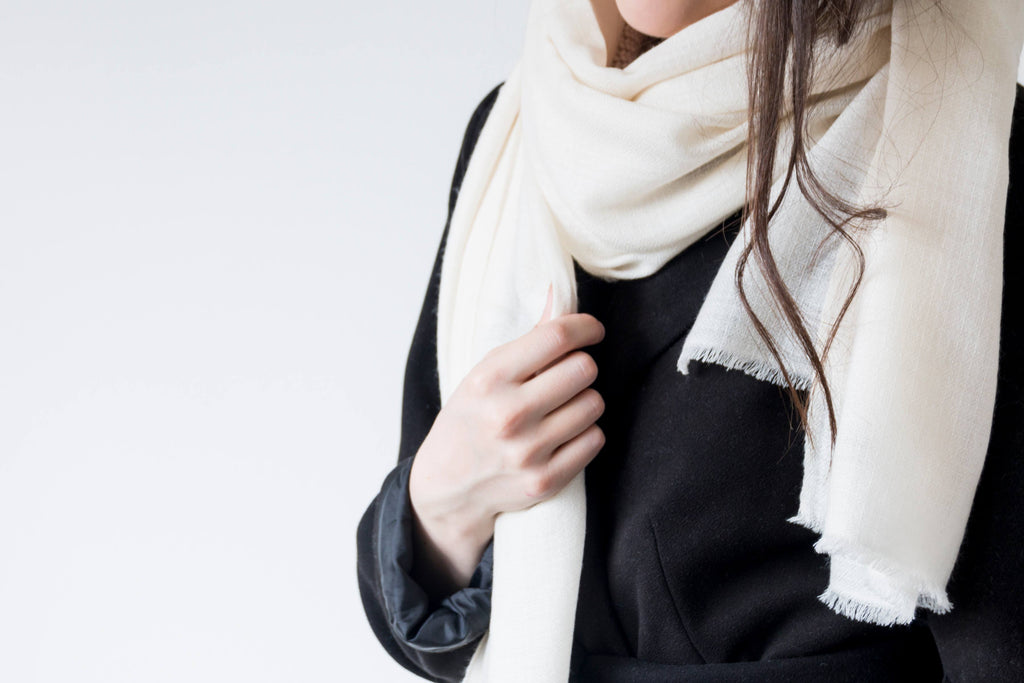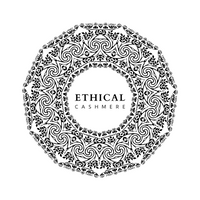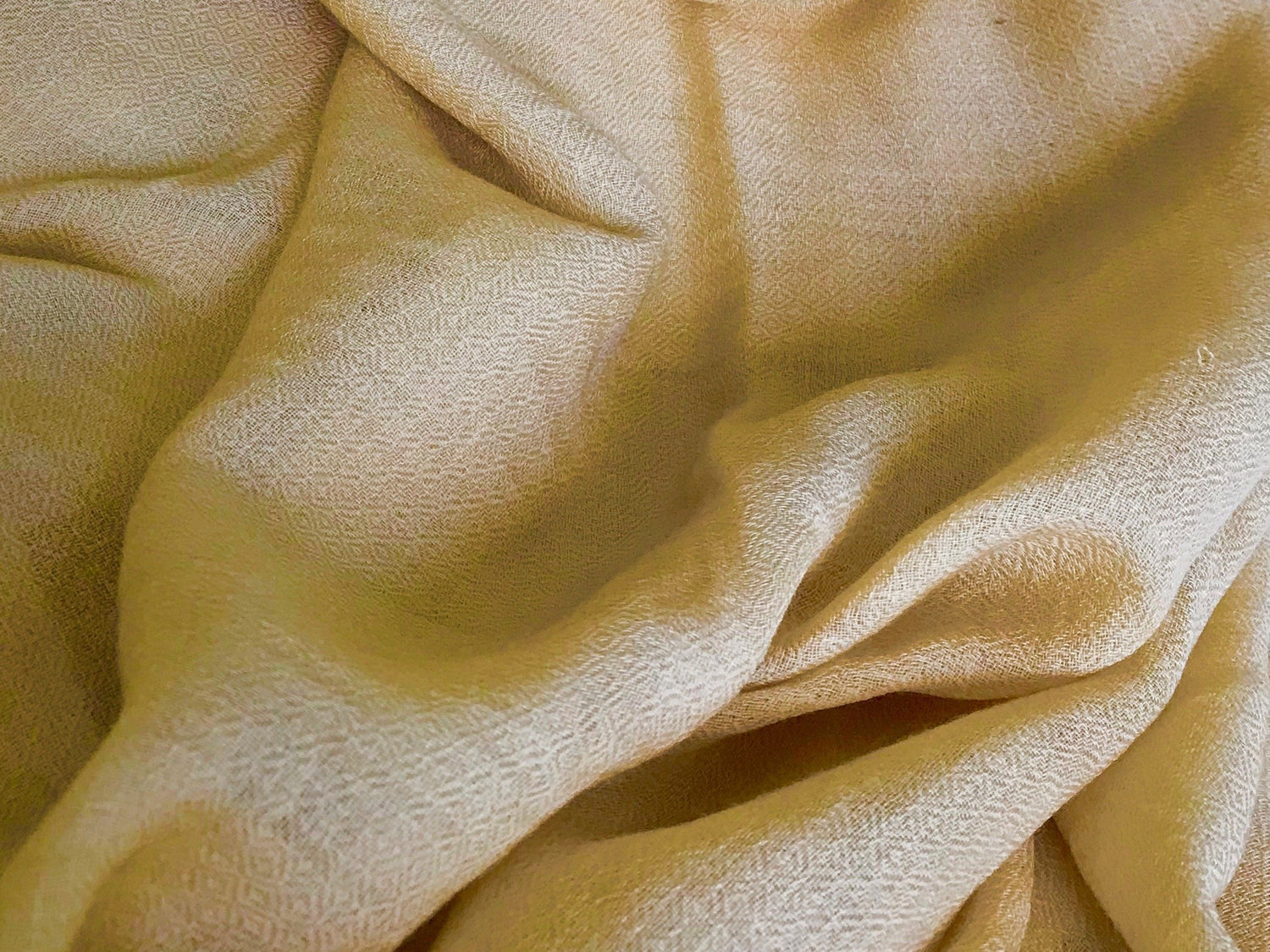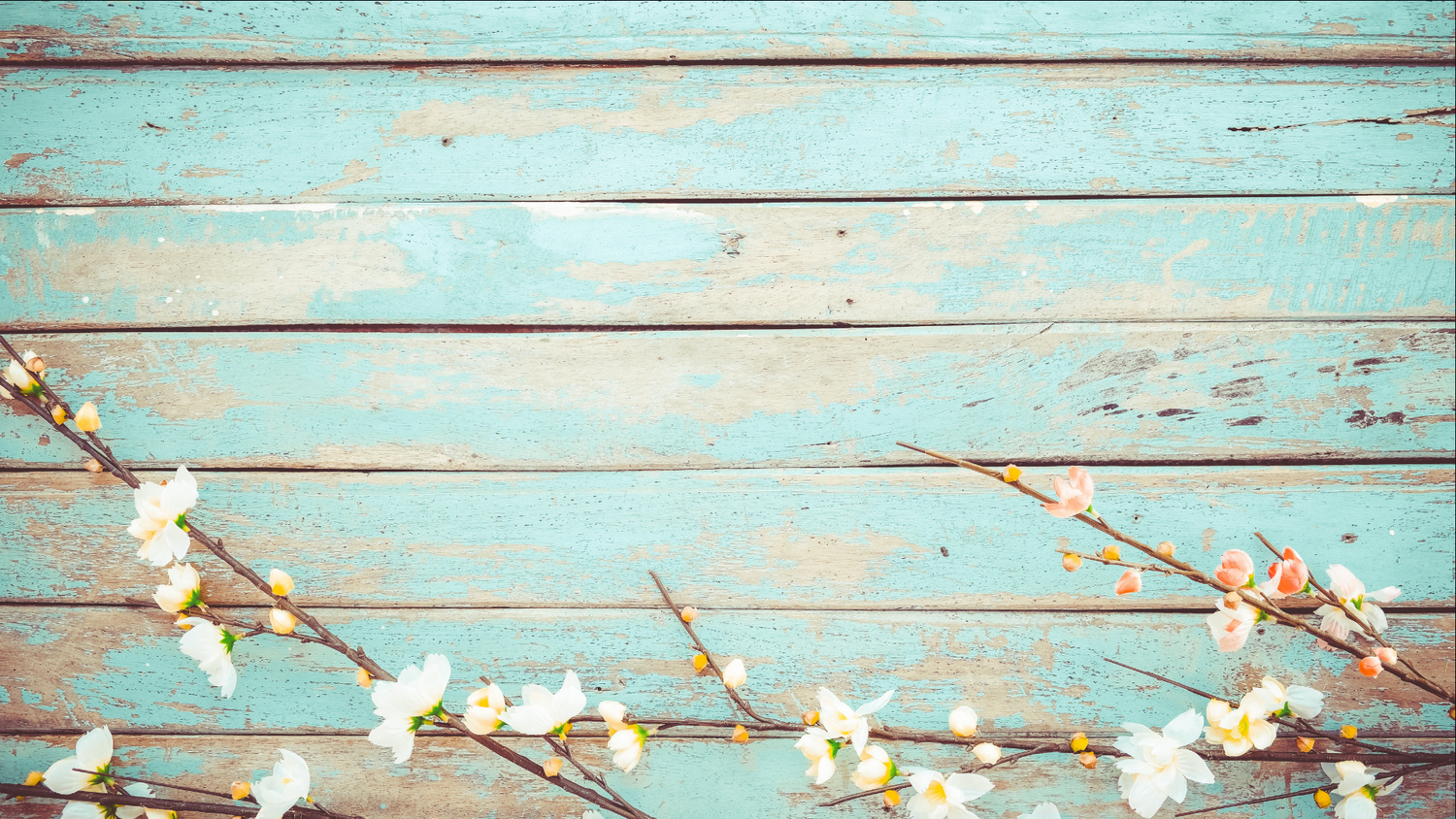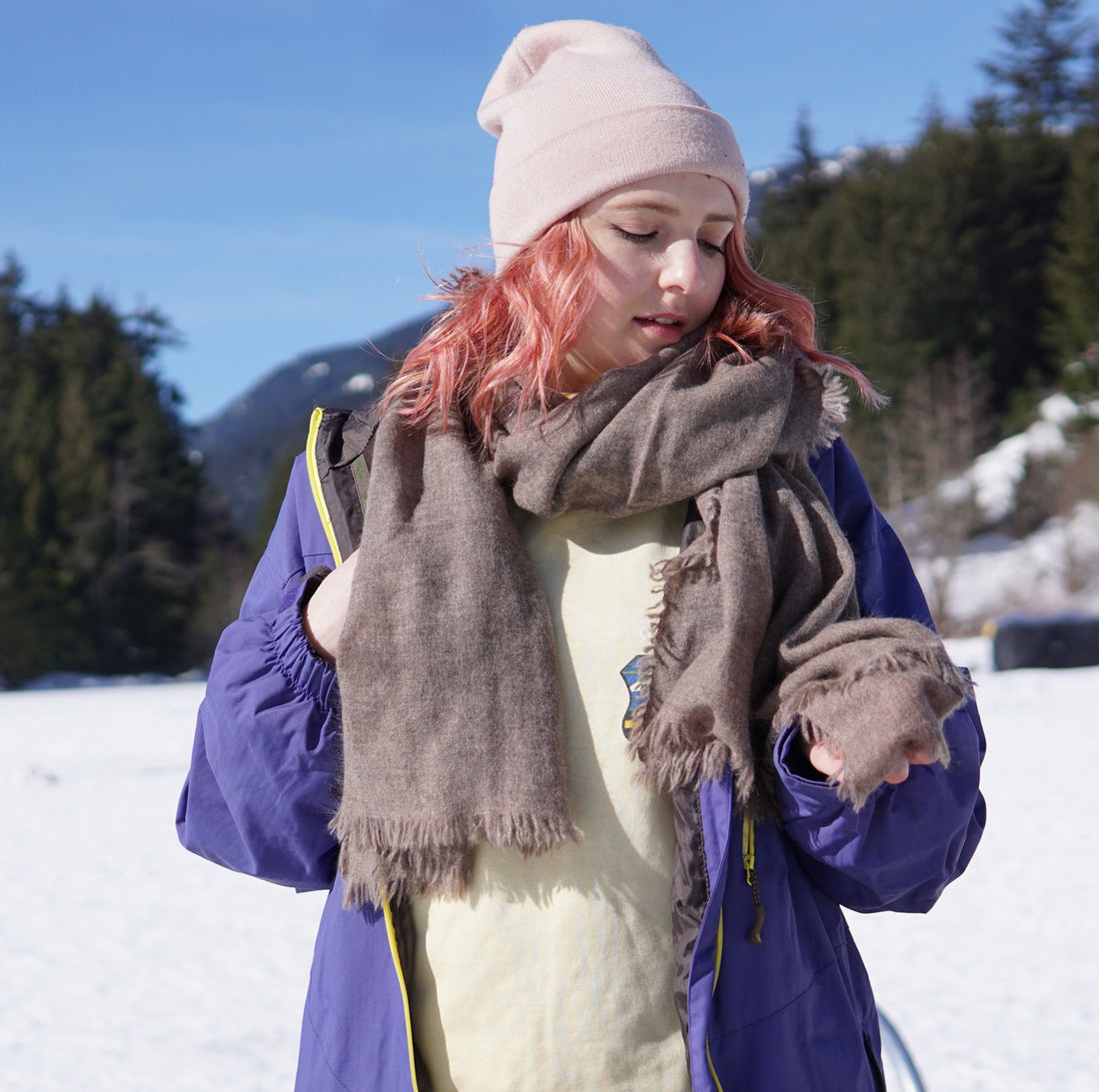Have you ever wondered whether the type of cashmere weave makes any difference beyond how nice the pattern looks? The answer is, not always, but it can.
First, we need to emphasise that the weave of cashmere would not be enough to compensate for inferior quality of the fibre itself. A high quality, naturally soft-bred cashmere (that is, a pashmina quality cashmere) woven for sturdiness would still feel softer than a mixed-bred, lower grade cashmere woven for maximum softness.
That said, all other things being equal, what's the difference? Here are a few weaves, explained from the perspective of an average customer.
The Plain Weave is the softest (with a caveat)
The plain weave is the simplest of weaves. It's just a straightforward over-under weave forming a criss-crossing pattern of squares. It is versatile, seen in a range of uses from coarse fabrics to light pashmina cashmere shawls.
A loose, light weave makes for a very flexible scarf that can be easily styled in different ways. The fuzziness of the cashmere fibre fills the space between the threads, enhancing the tactile feeling of softness. This close-up image is my personal high grade cashmere scarf (not in the store catalog, but can be requested).

A closer-woven plain weave scarf is hard wearing, suitable to be worn secured against your skin (soft!), such as when you're out and about in winter wear. It is less flexible and less suitable for fashion styling. Check out Ethical Cashmere's Winter Active scarf.

The Herringbone Weave gives a smooth texture
The herringbone, otherwise known as the broken twill weave, is a classic - and classy - 'V' shaped weave. This weave sacrifices some softness for a tighter weave that gives more durability. Not that you will notice, because the diagonal texture gives the scarf a smooth, soft drape.
It's also a very flexible weave, making the cashmere scarf almost as easy to style as a loose plain weave. Here is an example from another of my personal scarves, a fine Kashmiri cashmere shawl (not in the store catalog, but can be requested).
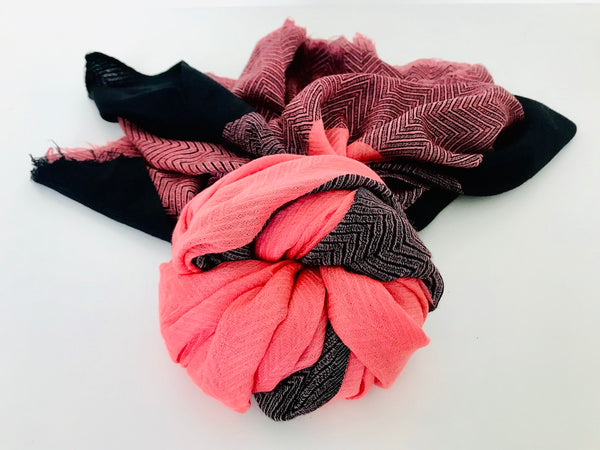
An example of a thicker, winter grade scarf with the herringbone weave is our heirloom quality Winter Classic scarf.

The Diamond Weave is soft but practical
The diamond weave is another kind of twill weave. It is a visually interesting weave for its subtle cascade of interlocking diamond pattern.

This weave has a more or less similar effect on softness as the herringbone. However, the tactile perception is not as silky, because the diamond pattern has an equally lateral-vertical 'grain'. It also drapes slightly less flexibly, so this scarf is the most 'winter scarf-like' (that said, it is still cashmere, and still far lighter and more flexible than another kind of wool or fibre). However, it is a sturdier weave, so it is perfect for an everyday scarf.
Most of Ethical Cashmere's catalog of scarves are in a diamond weave, chosen to be a versatile and long-lasting staple of your wardrobe. If you're looking for an affordable and practical cashmere scarf to suit your everyday outfits, this is the one!
The Twill Weave is soft and silky
The newest scarf on the store, the ECO, is a loose twill weave scarf.

This weave is not as rigidly bound as the other weaves, including the plain weave, even when it's woven more closely for more warmth. This makes the scarf very flexible even when it's thicker than scarves with other weaves, making it drape very well and feel very soft.
The loose lines make the cashmere softness feel silky, although it has less structure than the herringbone weave. Great for casual neck scarves, where you want a flexible garment for comfort, but it does not need to be as hard wearing.
